Survival At Sea: What To Pack In Your Grab Bag
Saltwater Journal is reader supported.
When you buy through our links we may earn an affiliate commission (at no extra cost to you)
IMPORTANT: The safety information in this article should be used as a guide only. Please refer to your governing Maritime body for boating regulation requirements.
Updated 30 October 2023
A grab bag goes by many names — ditch bag, panic bag, abandon ship bag — but they all carry essential survival gear ready to go, should an emergency happen at sea and you need to abandon your boat. The type of sailing you’ll be doing, and how far from land and help you’ll be, will determine how many things you include in your grab bag.
Spending money on emergency items for a grab bag or ditch bag can be painful to your wallet as the costs add up and you think “Am I ever going to actually use this?”. Honestly? That’s an unknown but the best advice for going to sea is to prepare for the worst, hope for the best. Having a grab bag is part of that preparation. Abandoning ship is always your last resort, and you should stay with the vessel as long as possible. However, you do have to leave your boat, you’ll be under great mental and physical pressure and have limited time to act. Would you currently have everything to hand to grab within seconds? Being organised ahead of such an event, and having the right gear in your grab bag may well save your life.
In this article, we’ll walk through a basic kit for coastal sailing, with essential safety gear. This will give you a solid start to build on if you look to go offshore (which requires more specialty items). Plus you can download a free checklist to help you get started!
-
Do I really need a grab bag?
What are the essential items for my grab bag?
Video - See inside Saltwater Journal’s Grab Bag
What should I put in my grab bag?
Is there anything else I should grab?
What do I include if I’m sailing offshore?
Where should I keep the grab bag?
Books — Stories of survival
Free Grab Bag Checklist
Do I really need a grab bag?
Yes. If you’re heading out on the water you need to be prepared for an emergency event to help keep yourself and crew safe.
It does take time, effort, and money to put an effective grab bag together, but there are two excellent reasons to make this a priority:
Higher chance of survival and rescue for you and loved ones onboard
Peace of mind you’re prepared for an emergency, so you can enjoy being on the ocean
The hope is that rescue isn’t far away, and the aim is that until rescue arrives you’ll be able to keep the crew together and safe. But poor weather conditions, and difficulty searching can mean a longer wait than you’d like. The grab-bag contains water, food, and survival gear to keep you alive and enable rescuers to locate you as quickly as possible.
Note: If you have a life-raft already onboard, it’s a good idea to check what equipment this comes with, as you may not need to double up on these items.
Here are the essential items for your grab bag
These are the basic essentials for your grab bag
Video — See inside Saltwater Journal’s grab bag
Watch this short video for a quick overview of our own coastal sailing grab bag.
What should you put in your grab bag?
Start with the grab bag itself
First, you’ll need a large sturdy bag that’s waterproof and floats. Pockets inside can be helpful. You can buy purpose built grab bags or some people use a large watertight container. Attaching a long lanyard to this is a smart idea so it can be tied to your life-raft or dinghy (or whatever you’re abandoning ship into). I’ve used a Gill 50L dry bag onboard our yacht, and our gear fills this to about 3/4 which leaves a good amount of air inside for this to float. But depending on your own requirements a smaller bag may suit such as the 25L or RapidDitch Express bag shown below.
EPIRB or PLB
Both an EPIRB (Emergency Position-Indicating Radio Beacon) and PLB (Personal Locator Beacon) should be priority purchases as they both pinpoint your exact location for emergency rescue services. An EPIRB is typically mounted on the boat and is registered to the vessel, showing the vessel location. A PLB is registered to a person and is normally carried on your person (often attached to your lifejacket), showing your location. Ideally, each crew member would have their own PLB to wear. In our boat, we plan to take the EPIRB with us as we leave, and we have one PLB in our grab bag.
Flares and Gloves
Flares are often kept in a separate waterproof flare container but if it’ll fit in the grab bag add it in, as it’s one less extra thing to think about taking with you. Or put a few separate flares in your bag. Make a note of the flare expiry dates in your maintenance log or check these annually. You could add in a pair of heavy duty workmen style gloves for hand protection holding the flares. Our flare kit includes a variety of types, and we’ll be looking to add electric flares in future.
First Aid Kit, Medication, Seasickness tablets
Add a basic first aid kit to your grab bag. Importantly, you’ll want to make sure you’ve got supplies of pain-relief and any medication you’ll need. Seasickness tablets are worth including too, as there’s a high-chance that while you’re in a small dinghy or life-raft waiting for rescue, you’ll start to feel ill. If you’ve got a bigger more comprehensive medical kit onboard (and you have time), you can grab this too.
Sanitary products
I’ve added pads and a menstrual cup/tampons to our grab bag too and keep these with the medical kit. It’d be pretty annoying to have your period while you’re in a life-raft in the middle of the ocean but menstruation doesn’t care whether you’re in an emergency or not! Some people add baby wipes to their kit too.
Light
There’s a few options for emergency lighting. A powerful torch that’s waterproof (with spare batteries) is ideal, or a strong head-torch with a strobe. There are also hand powered, wind up torches which don’t require batteries. Cyalume lightsticks are also recommended and these are fairly cheap to buy.
Buy Amazon
Whistle and Signalling mirror (heliograph)
A whistle and signalling mirror are two small, inexpensive items that can be helpful in different conditions. At night, or in fog the whistle can be heard over a long-distance. While the mirror can reflect sunlight as far as 7 miles on a clear day — good for attracting attention from a rescue boat or helicopter.
Survival blankets
These aluminium survival blankets don’t take up much space and their job is to keep body warmth inside, while protecting you from the weather.
Sunscreen, Sun hat, and Lip-balm
Keep painful sunburn at bay and throw in a big tube of sunscreen and a protective hat. Lip-balm will protect lips from chapping in wind, rain and sun. See our recommendations for the best sailing hats and the best sunscreens.
Warm clothes and beanie
Cold can be life threatening. Throw some spare thermals and a woollen beanie into your grab-bag to use as base layers and protection from the elements.
Sharp knife
A sharp knife has so many uses, in so many different situations. Keep it in a sheath and stash this in your bag too. We keep a dive knife which has both a serrated and smooth edge, and a strap so you don’t lose it overboard.
Bailer and a sponge
Any scoop can be used as a bailer — from a cup right down to the humble milk bottle cut in half!
Fishing hand line, tackle & cutting board
This one comes down to how long you’ll be at sea, but plan for the worst right? Being able to catch life-saving protein sustenance is a no-brainer. Include a robust hand line, nylon, a variety of tackle and a cutting board to your grab bag.
Duct tape, cable ties, and spare line
These three can be used in many different ways for temporary repairs of rafts and people!
Collapsible bucket
A bucket is multi-use and a collapsible one won’t take up a lot of space. We’ve added a 2m long-line to a 7L bucket so it can be tied onto the life-raft or dragged behind.
Toilet paper and Hand sanitiser
Keep the toilet paper in a waterproof bag and include sanitiser to keep germs at bay.
Matches and a Lighter
Give yourself the ability to light a fire easily by taking matches and a lighter.
Solar power bank
This is a great addition to throw in your pack and a good way to keep your phone charged. If you’ve got a spare USB charging lead — store these items together in a waterproof ziploc bag.
Navigation tools
A handheld GPS and compass are good backups to have in addition to an EPIRB, PLB, and cellphone.
Divers slate, or Notebook and pencil
Keep a notebook and pencil in a waterproof bag. We also include a divers slate which can be written on underwater or in the rain — so there’s no chance of soggy or ruined notes.
Water
Water is the most important ration onboard. It’s essential that you take as much bottled water as you can. Don’t fill bottles to the top though — keeping some air at the top of your bottles will help them float. These MSR Dromedary 10L water bags are excellent for durability, reliability and space saving.
Food
Food rations should include high-energy food and protein that doesn’t need cooking, such as chocolate, fruit/nut mixes, muesli bars and canned tins like beans and fish. You’ll need a can opener too.
NOTE: Some cruisers keep their water and food in a separate bag. We’ve put our food in a smaller grab-bag inside our big one – so this is easy to pull out and check and swap food out etc.
Extra gear to grab as you leave the boat:
Here’s some extra items to take with you
Lifejackets and Tethers
Lifejackets should be worn — especially in an emergency, so these aren’t likely to be stored in your grab-bag. But do consider where you usually keep your life-jackets and tethers in relation to making a quick exit from your boat. Tethers can be handy in the life-raft.
See my Ultimate Guide to Choosing the Best PFD and Lifejacket.
Handheld VHF
Make sure it’s kept fully charged keep it either in the grab bag, or nearby. We often keep ours secured in the cockpit as our main VHF is mounted below deck. This means we could most likely (fingers crossed) grab it as we exit our boat. Include spare batteries in a water-tight ziploc bag too.
Log book
It’s essential you take your ships log with you as an important record of your trip — and this may be a legal necessity if an incident is investigated.
Personal items grab bag
We use a smaller grab bag which we keep our smaller personal items in. This one’s easy to pack and unpack when we begin and finish our sail. Here, we keep our wallets, passports, jewellery and any cash we might have (we sound like pirates!). But we live onboard — everything we own is with us — so we need to take our important things if we jump ship. We also throw in our main laptop, hard-drives, glasses, sunnies and mobile phones, and include a spare dry-bag and ziplocs to ensure the electronics stay dry. Most of the time we’re wearing our sunglasses, but if not we’d throw these in here too.
Here are some ideas of personal items you might take with you
Here are extra items to include in your grab bag if you’re sailing offshore:
Note: Of course, you can include these for coastal sailing too. View New Zealand’s safety regulations here.
Distress V sheet — Offshore safety kit requirements for many countries (including New Zealand) include a large orange sheet with a big V on it — an international distress signal
Desalination kit or handheld watermaker
Handheld GPS
Satellite phone and spare battery
Extra knives
Multitool
Sea survival guide
Inflatable patch repair kit
Graduated drinking vessel (to ration water accurately and fairly)
Candles
Heavy duty sewing kit
More extensive medical kit — including petroleum jelly for saltwater boils
SOLAS poster of illustrated life saving signals
Dry suit or immersion suit
Second sea anchor with a swivel and more than 30m of line (most life-rafts will have one already)
Other helpful things to grab:
Speargun
Water jerry cans off the deck
Anything that comes adrift off the boat that looks remotely helpful for flotation or in any other way — such as helping attract attention
Where should you keep your grab bag?
Keep your grab bag somewhere secure where it won’t come loose and endanger crew in rough seas or leave the boat without you! And it needs to be readily accessible and easy to grab if the time comes. We store ours under the navigation table with bungies to hold this in place. It’s near the companionway exit and near our life-raft. The smaller grab-bag with personal items is secured on top of the nav desk, ready to go.
IMPORTANT: A safety briefing should be done with every person onboard, before you go to sea. Make sure everyone knows where the boat’s safety equipment is kept — fire-extinguishers, through hull plugs, lifejackets, safety harnesses, grab-bag, flares, life-raft, etc — including how to use them. Ensure crew understand the actions to take, and their role, should an emergency happen.
Free grab bag checklist
To help you assemble or review your grab bag, I’ve put together an easy to follow grab bag check-list. You can download a free PDF of this below.
I’ve organised this in logical sections so you can work through it without feeling overwhelmed. Feel free to add to the notes section any extra gear you’ve put in your bag.
Stories of Survival
In Summary
No-one wants to be in an emergency situation at sea, but it’s important to be prepared. Remember to review your grab bag gear regularly and check all the gear is in good condition. Get the free checklist to help make this easier!
You can also learn a lot from the experience of others. I highly recommend reading real life-accounts of surviving for long-periods at sea. The three books above are quite incredible testimonials of abandoning ship, and you may find yourself adding extra handy items to your kit based on their stories — like petroleum jelly! (You’ll need to read Adrift for that one!).
Stay safe!

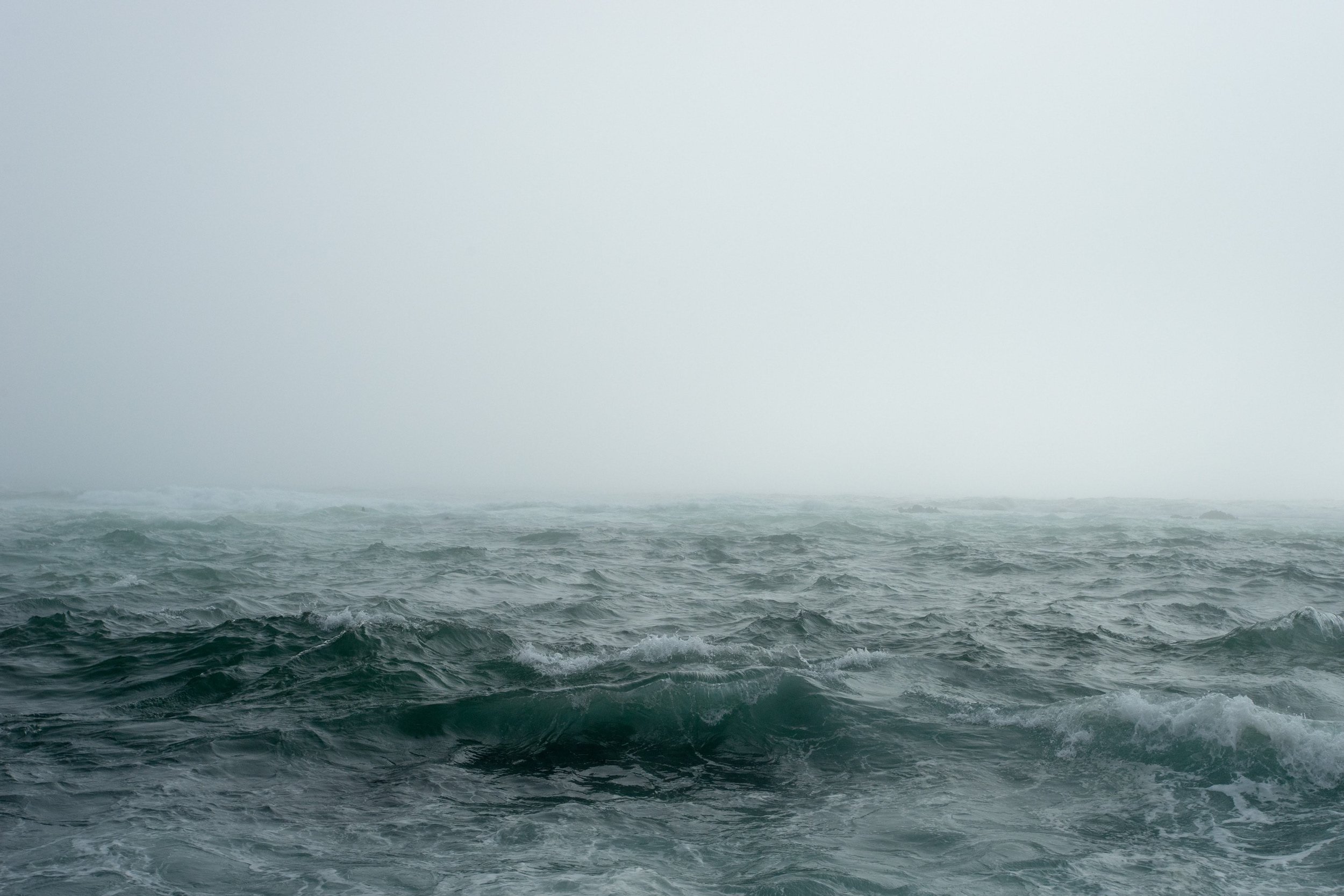
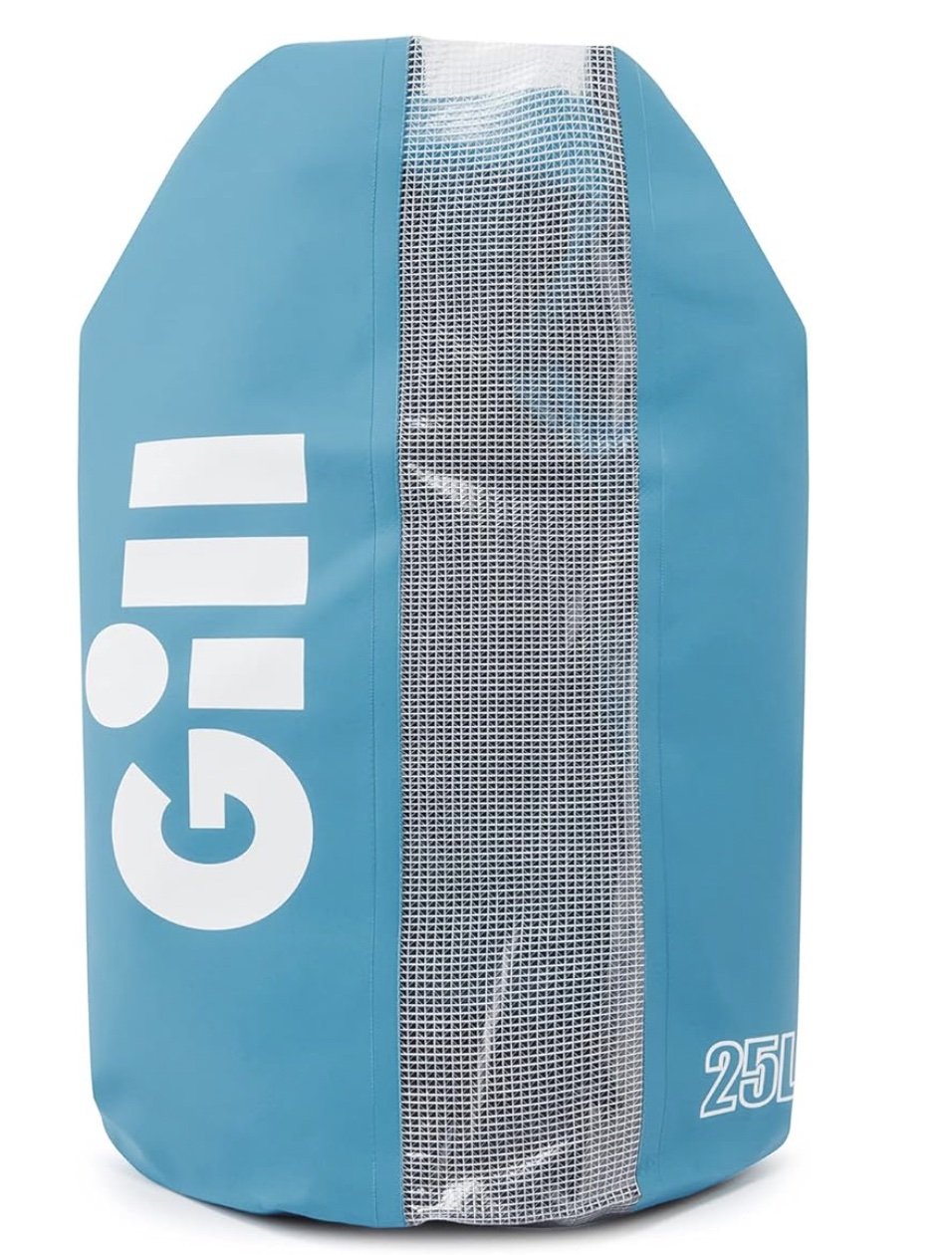
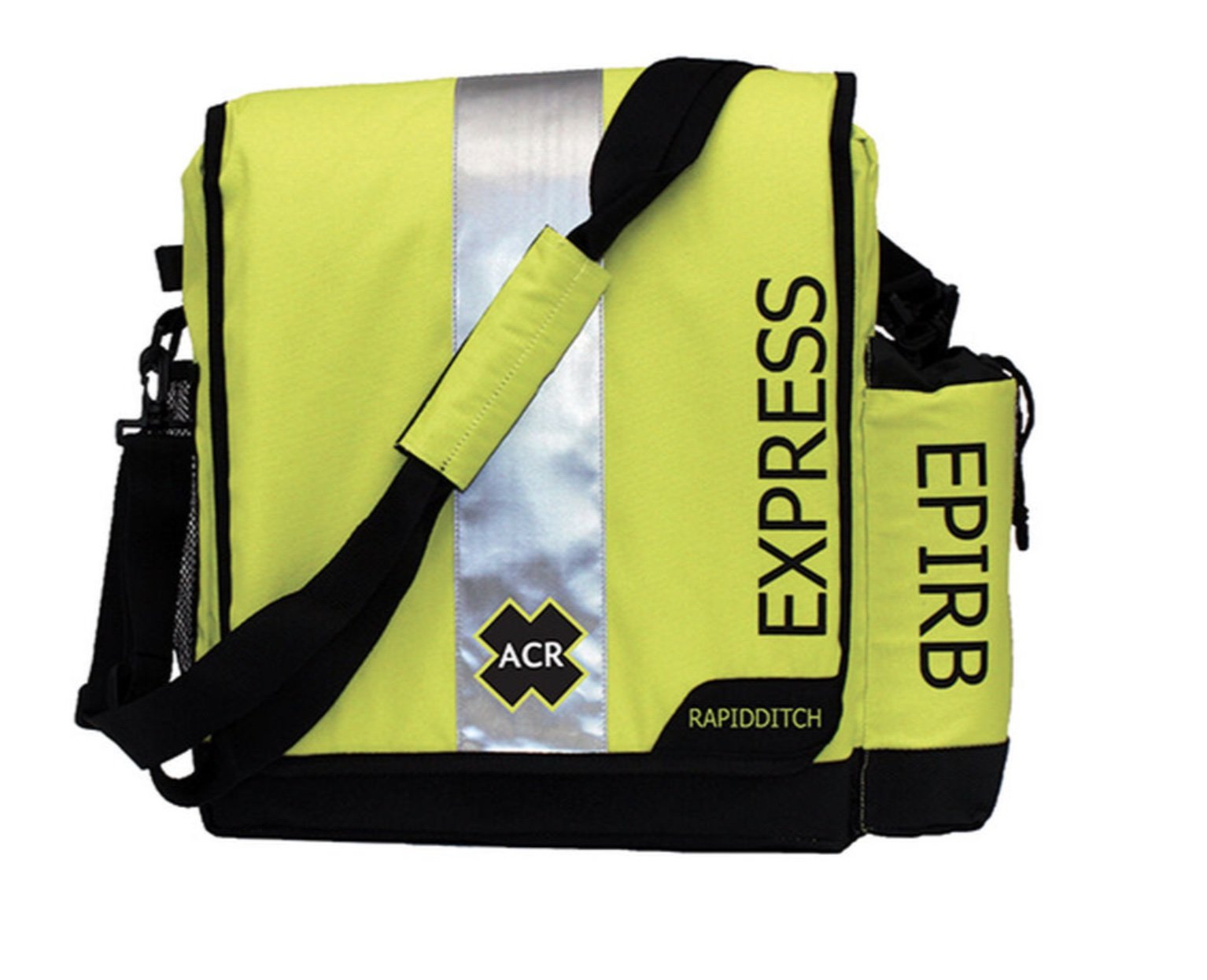
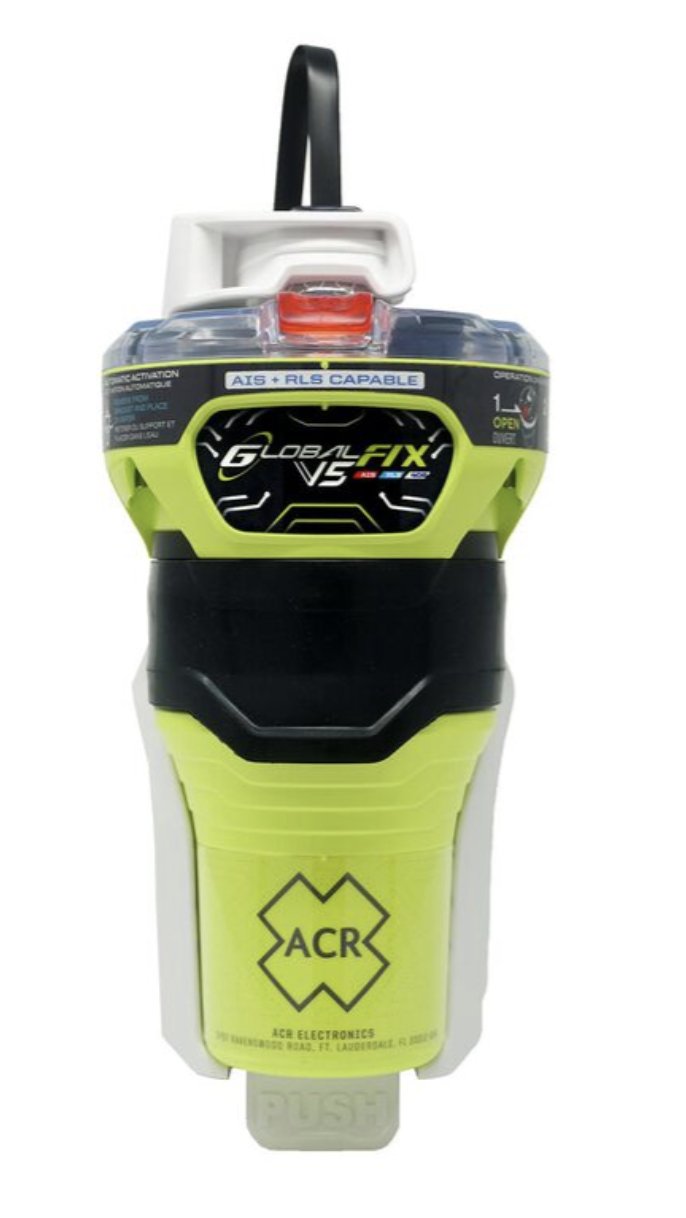

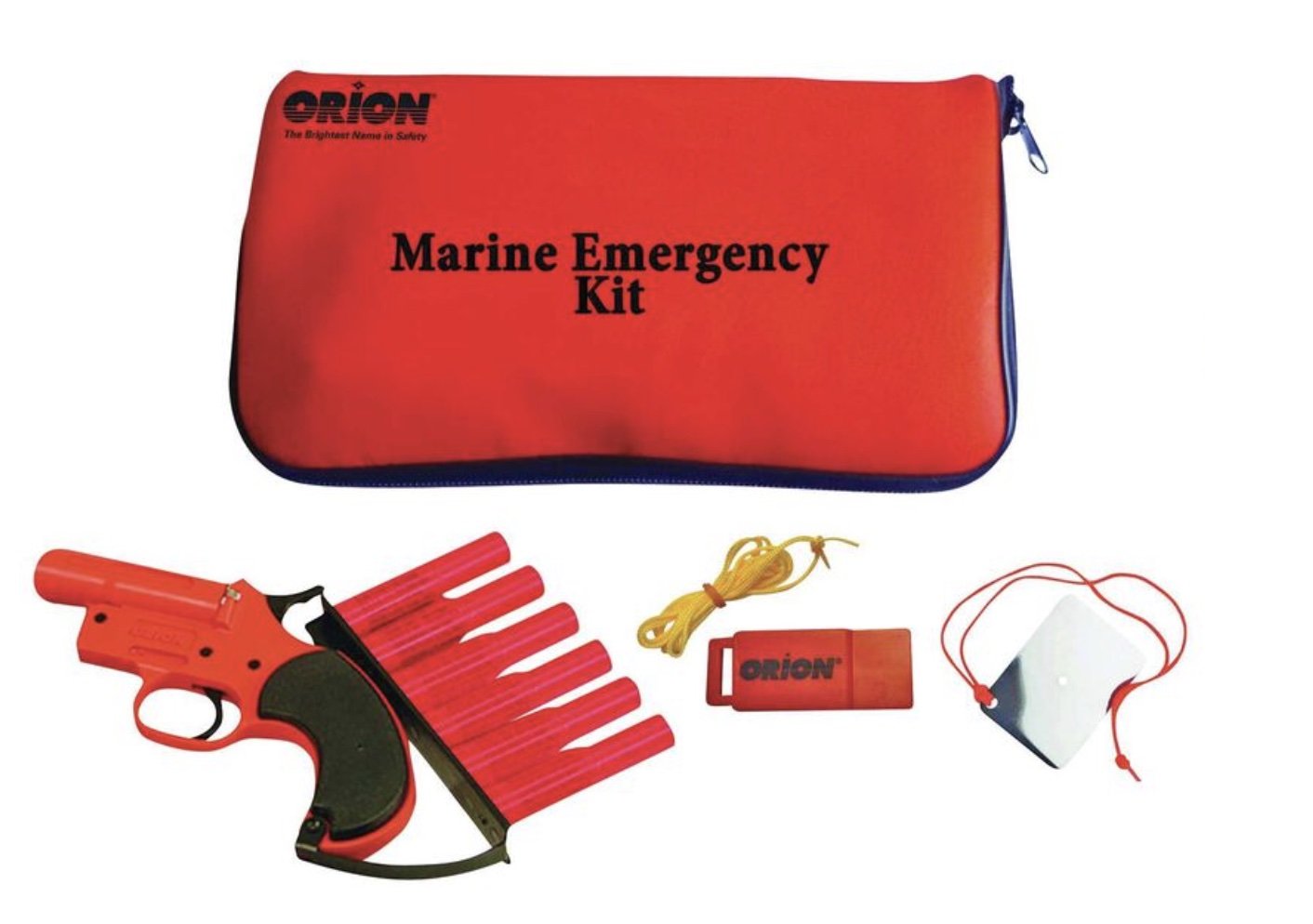
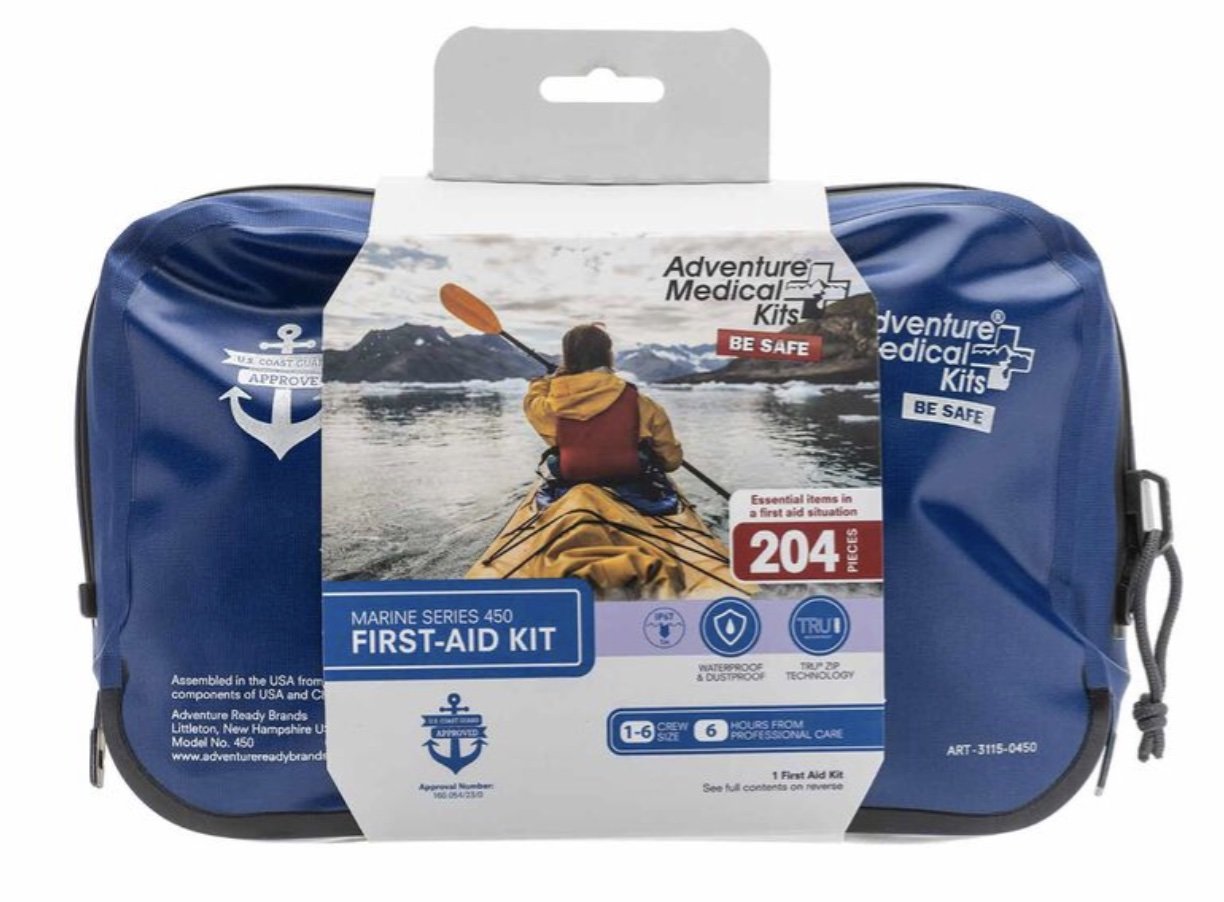



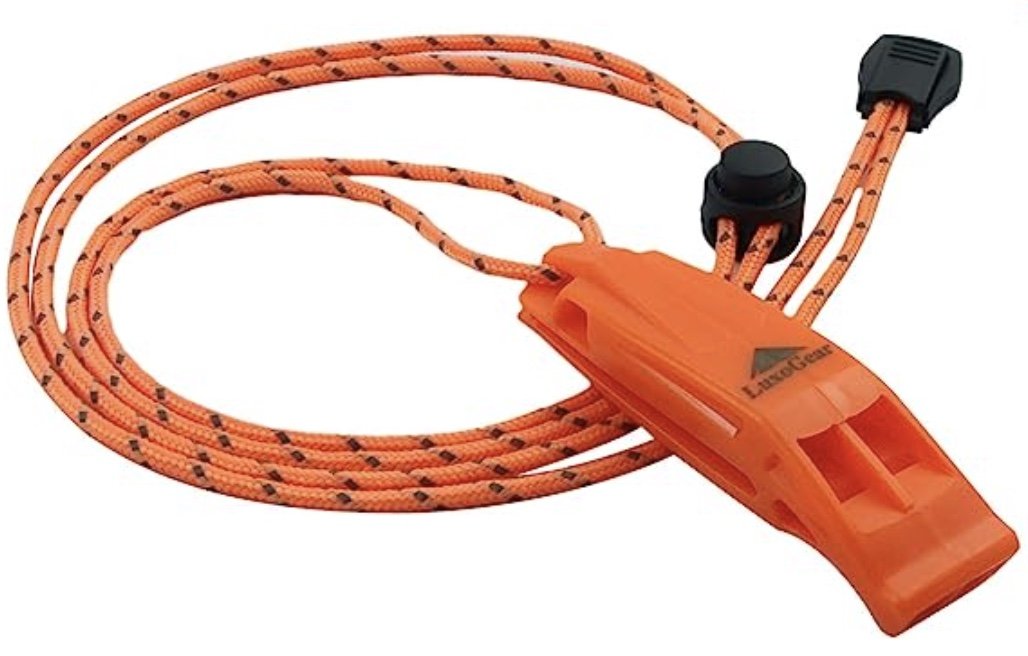



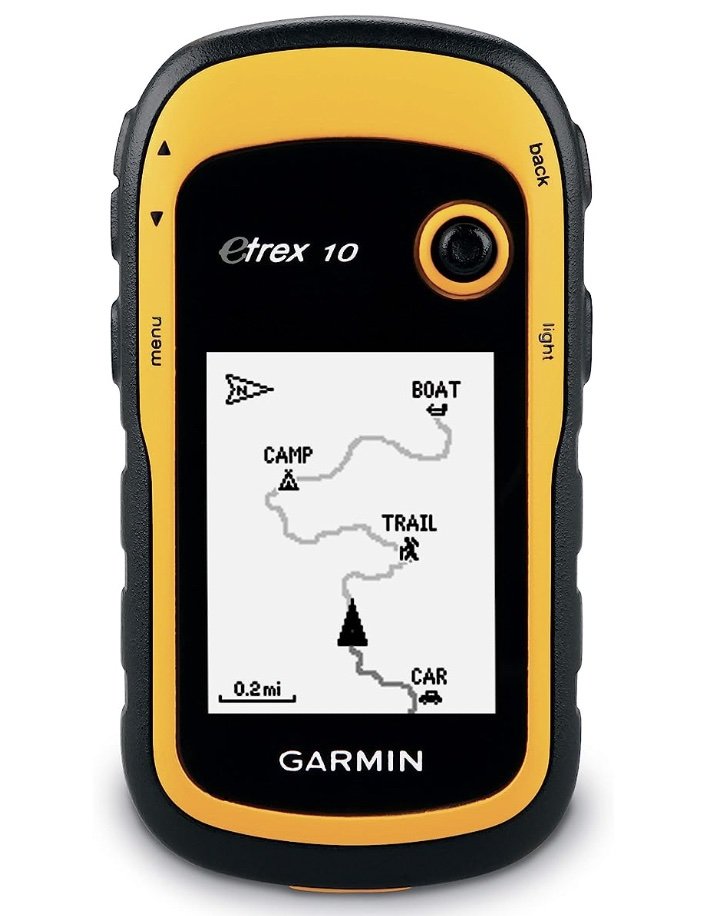


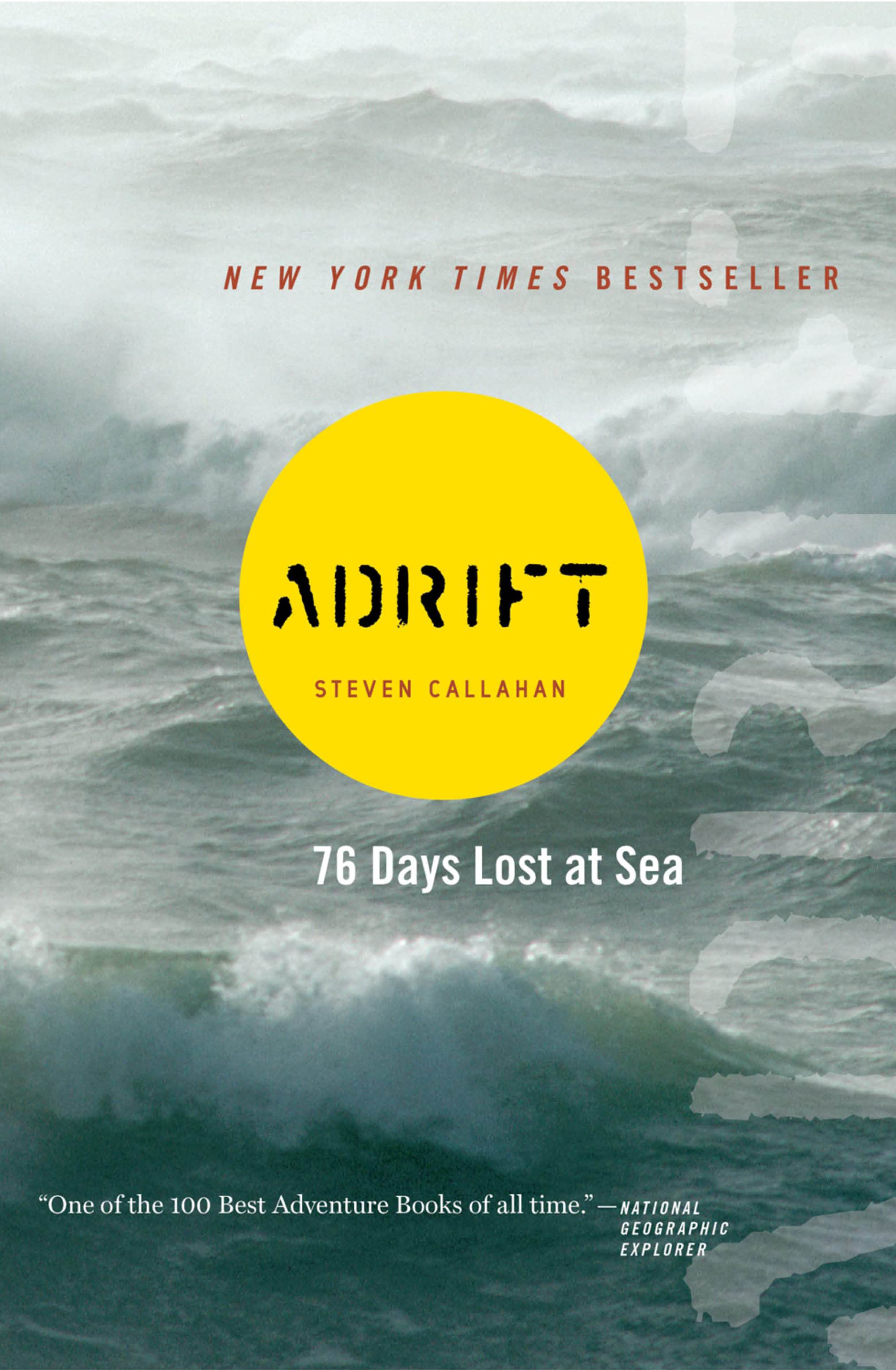







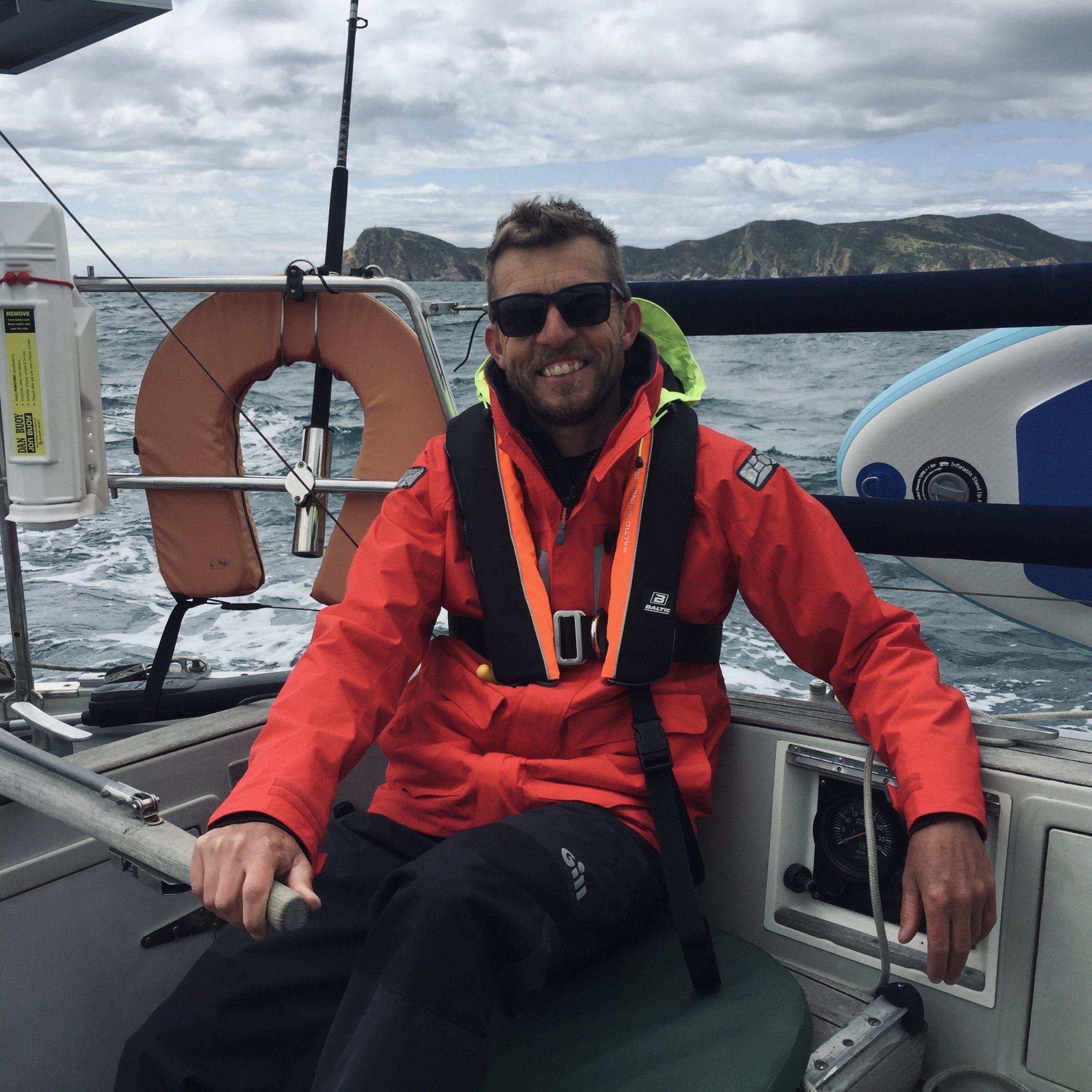





Dreaming of ditching a conventional life on land with your kids? Here’s the only book you’ll need — it’s the ultimate guide to picking the right boat, preparing your family, and thriving at sea.